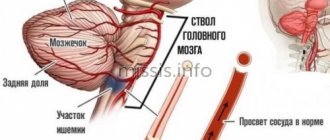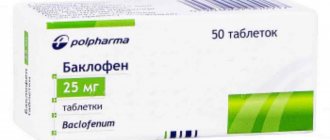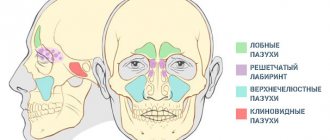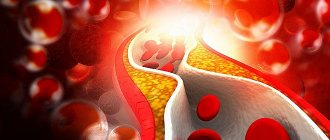A disease caused by exposure to ionizing radiation is called radiation sickness. In both humans and animals, it can affect almost all organs and systems: skin, bone marrow, nervous system, digestive organs, endocrine glands, and so on. Radiation sickness often results in various types of oncology.
People come into contact with powerful sources of ionizing radiation during X-ray examinations or during treatment using radioactive drugs, as well as those who have been in areas of increased radioactivity (emergency nuclear power plants, or areas where atomic weapons were used or tested).
Flows of alpha particles, beta particles or neutrons, as well as electromagnetic radiation of very high frequency: x-rays and gamma rays, are ionizing.
Symptoms of radiation sickness
Radiation sickness has certain symptoms that depend on the degree of the disease, its formation, as well as development and manifests itself in several main phases. The first phase is characterized by the appearance of nausea, vomiting is possible, bitterness and a feeling of dryness arise in the mouth. The patient begins to complain of rapid fatigue, headache and drowsiness. This phase is characterized by low blood pressure, in some cases high temperature, diarrhea, and loss of consciousness.
The above symptoms appear when receiving a dose not exceeding 10 Gy. Irradiation that passes the threshold of 10 Gy is characterized by redness of the skin with a bluish tint in the most affected areas of the body. The following symptoms are also characteristic of radiation sickness in the first phase: changes in pulse rate, the manifestation of a uniform decrease in muscle tone, trembling of the fingers, narrowing of tendon reflexes.
After receiving radiation, the symptoms of the primary reaction disappear within about 3-4 days. The second phase of the disease begins, which has a hidden (latent) appearance and lasts from two weeks to a month. An improvement in the condition is observed, the deviation of health can be determined only by the changed pulse rate and blood pressure. At this phase, there is a lack of coordination during movement, reflexes decrease, involuntary trembling of the eyeballs appears, and other neurological disorders are possible.
After 12 days, with a radiation dose of more than 3 Gy, patients begin to experience progressive baldness and other manifestations of skin lesions. At a dose exceeding 10 Gy, radiation sickness immediately passes from the first phase into the third phase, which is characterized by pronounced symptoms. The clinical picture shows damage to the circulatory system, the development of various infections and hemorrhagic type syndrome. Lethargy increases, consciousness becomes darkened, cerebral edema increases, and muscle tone decreases.
Dangerous dose for humans
The dangerous radiation dose was first established in 1952 and amounted to 15 mSv/year. Seven years later, the permissible limit was reduced to 5 mSv/year, and in 1990 - to 1 mSv/year. Today, many experts insist on reducing this value to 0.25 mSv/year, based on the fact that the accepted limit corresponds to genetic damage of only 35 people per 1,000,000 newborns, while in reality this figure is 450-3,400 cases. Of course, a value of 0.25 mSv/year looks unrealistic, but given the tightening of radiation measures, it may eventually be accepted.
Degrees of radiation sickness
The acute form of radiation sickness is divided into four degrees of severity:
- The first degree (mild) includes the amount of radiation with a dose of 1-2 Gy, it manifests itself after 2-3 weeks.
- The second degree (moderate) includes radiation with a dose of 2-5 Gy, which manifests itself within five days.
- The third degree of radiation (severe) includes the received dose in the range of 5-10 Gy, which manifests itself after 10-12 hours.
- The fourth (extremely severe) includes a radiation dose of more than 10 Gy, its manifestation is possible half an hour after irradiation.
Negative changes in the human body after irradiation depend on the total dose he received. A dose of up to 1 Gy has relatively mild consequences and can be assessed as a disease in a preclinical form. Irradiation with a dose of more than 1 Gy threatens the development of bone marrow or intestinal forms of radiation sickness, which can manifest themselves in varying degrees of severity. A single exposure to a dose of more than 10 Gy usually leads to death.
The results of constant or one-time minor exposure over a long period of time (months or years) may manifest consequences in the form of somatic and stochastic effects. Disorders of the reproductive and immune systems, sclerotic changes, radiation cataracts, shortened life span, genetic abnormalities and teratogenic effects are classified as long-term consequences of radiation.
What is beta radiation?
There are different types of radiation that affect the body in their own way. Since the study of this topic began relatively recently, scientists cannot yet say with accuracy how much damage is caused to the body by this or that radiation. The types of radiation sickness can largely depend on what kind of radiation a person was exposed to.
The following types of radioactive radiation are distinguished:
- Alpha radiation. This type of radiation has the least penetrating ability, but can cause great harm to the body. Once inside the body through food or air, alpha particles are not removed from it and can accumulate for many years. This all leads to the fact that accumulated particles cause irreversible changes and mutations.
- Beta radiation. Unlike alpha particles, particles of this radiation have a higher penetrating power. But beta radiation is generally capable of affecting only the upper tissues of the body at points of contact or accumulating in the body itself. This type of radiation is the most gentle, but it is also the most common.
- Gamma radiation. Although this radiation has a higher penetrating ability compared to the previous two types, it has a weak effect on the biological organism.
- Neutron radiation. This species has not been studied well enough to make accurate and definitive conclusions about its danger. But it is already known that this is one of the most dangerous radiations for humans. This species is found during atomic explosions and, due to the fact that neutron radiation has a high mass, it can cause enormous damage to the cells of a living organism.
All these types of radiation affect people differently, but they should not be underestimated. Even the weakest radiation can lead to serious consequences over time. After all, everything depends not only on the dose of radiation, but also on the period of time during which the person was exposed to negative effects.
Diagnosis of radiation sickness
Diagnosis and treatment of the disease is carried out by doctors such as a general practitioner, oncologist and hematologist. The basis of diagnosis is the clinical signs that appear in the patient after irradiation. The received dose is determined using dosimetric data and by chromosomal analysis during the first two days after radioactive exposure. This method allows you to choose the right treatment tactics, see the quantitative parameters of the radioactive effect on tissue and predict the acute form of the disease.
Diagnosis of radiation sickness requires a whole range of studies: specialist consultation, laboratory blood tests, bone marrow biopsy, general assessment of the circulatory system using sodium nucleate. Patients are prescribed electroencephalography, computed tomography, and ultrasound. As additional diagnostic methods, dosimetric tests of blood, feces and urine are performed. If all of the above data is available, the doctor can objectively assess the extent of the disease and prescribe treatment.
Treatment of radiation sickness
A person who has received radiation must be treated in a special way: remove all his clothes, quickly wash him in the shower, rinse his mouth, nose and eyes, do a gastric lavage and give him an antiemetic. Mandatory in the treatment of this disease is anti-shock therapy, taking cardiovascular, sedative and detoxifying drugs. The patient must take medications that block gastrointestinal symptoms.
To treat the first phase of the disease, drugs are used to relieve nausea and prevent vomiting. If cases of vomiting are indomitable, chlorpromazine and atropine are used. If the patient is dehydrated, saline will be required. Severe radiation sickness in the first three days after irradiation requires detoxification therapy. To prevent collapse, doctors prescribe norepinephrine, cardamine, mesaton, as well as trasylol and contrical.
Various types of isolators are used to prevent internal and external infections. They are supplied with sterile air, and all medical materials, care items and food are also sterile. The skin and visible mucous membranes are treated with antiseptics. The activity of the intestinal flora is suppressed by non-absorbable antibiotics (gentamicin, neomycin, ristomycin) with simultaneous administration of nystatin.
Infectious complications are treated with large doses of antibacterial drugs (ceporin, methicillin, kanamycin), which are administered intravenously. The fight against bacteria can be enhanced with biological and targeted drugs (antistaphylococcal plasma, antipseudomonas plasma, hyperimmune plasma). Typically, antibiotics begin to act within two days; if there is no positive result, the antibiotic is changed and a different one is prescribed, taking into account bacteriological cultures of sputum, blood, urine, etc.
In case of severe radiation sickness, when profound suppression of immunological reactivity is diagnosed and hematopoietic depression occurs, doctors recommend a bone marrow transplant. This method has limited capabilities due to the lack of effective measures to overcome the tissue incompatibility reaction. The donor's bone marrow is selected taking into account many factors and compliance with the principles established for allomyelotransplantation. The recipient is preliminarily immunosuppressed.
Prevention of radiation sickness
Preventative measures against radiation sickness include shielding those parts of the body that are exposed to radiation. Drugs are also prescribed that reduce the body's sensitivity to sources of radioactive radiation. Those at risk are offered vitamins B6, C, P and anabolic hormonal agents.
The most effective preventive measures are the use of radioprotectors, which are chemical protective compounds, but have a large number of side effects.
Author of the article:
Mochalov Pavel Alexandrovich |
Doctor of Medical Sciences therapist Education: Moscow Medical Institute named after. I. M. Sechenov, specialty - “General Medicine” in 1991, in 1993 “Occupational diseases”, in 1996 “Therapy”. Our authors
Where can you get a high dose of radiation?
There are no places in nature where you can receive a large dose of radiation in a short time. The exceptions are provinces where the population receives average annual doses that exceed the established limit by 5-10 times.
For example, in the Indian state of Kerala the dose is 5 mSv, in the Brazilian city of Guarapari - 5.5 mSv. But people living in these areas have adapted to the increased dose of radiation; among them there is no increased mortality or incidence of cancer.
For other citizens, the main sources of potential danger of receiving radiation in high (over 1000 mSv) doses are man-made: accidents and explosions at nuclear power plants, nuclear tests, instruments and devices that contain radioactive substances.








